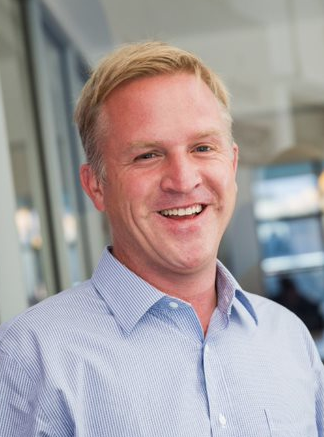Easing microfinancing
Technology has made loans for small businesses very accessible. Branch, a company that has elevated the hassle borrowers as well as financial institutions go through, can give loan approvals and loans in minutes through an app. In the third issue of In Focus magazine, Su Aziz speaks to its CEO.

41-year-old Matt Flannery believes that ignorance, sometimes, can be a good thing. Well, it certainly brought him a great deal of good. A graduate of Stanford University, Matt admitted to not knowing much about microfinancing when he co- founded Kiva in 2004 with Jessica Jackley.
It’s a non-profit microfinance organisation that allows people to lend money through the internet to low income entrepreneurs and students in over 80 countries, and he was its CEO for a decade.
Currently, he’s the CEO of Branch International which is a financial services company and has been referred to as a ‘branchless bank’. ‘While Branch does operate in what some refer to as a microfinance space, it’s a term that we find that’s often associated with different business or non-profit models, and so not one that we typically use to describe our business,’ explains Matt. Basically, Branch makes small personal loans between USD2.50 to USD500 to people in countries such as Kenya, Tanzania and Nigeria through their android phones.
The Branch app searches a borrower’s phone thoroughly for personal data such as texts, calls and contact lists to determine that he or she is credit-worthy. ‘Branch normally give 12-month loans with an annual percentage rate (APR) of 12 per cent. We hold the loans on its own balance sheet and we don’t securitise them.’
Small and medium enterprises, according to The World Bank, fill the infrastructure gap in fragile countries such as those recovering and reconstructing in war-torn areas. However, there’s often insufficient public sector funding and, not to mention, disinterest from large private sector firms. In fact, in these countries, SMEs make up quite a substantial share of the private sector and may play a fundamental role in filling the infrastructure services gap.
Therefore, microfinance, which exploits technology, plays an important role, particularly with the small businesses of these communities. Here, Matt answers some questions on this.
Can microfinance significantly reduce poverty?
Microfinance is a wonderful industry focused on providing financial services such as savings, loans, insurance and the like to those previously excluded. These services play a key role in lifting entire populations out of poverty. Micro financial institutions (MFIs) have spread rapidly across the globe since the 1970s and to date, they serve hundreds of millions of people. They’ve relatively low default rates and are loved by communities around the world. However, it’s an unfortunate exaggeration to say that MFIs alone can single-handedly eradicate poverty in a population, they’re just part of the puzzle. We also believe that financial access and liquidity for both consumer and business, is generally a good thing. This is also why central bankers around the globe have digital financial inclusion on their radar. It helps increase GDP growth and household income.
How can microfinance compete with informal money lenders?
For centuries, informal money lenders have played a key role in increasing access to capital, when it’s needed the most. Let’s not forget why they’ve been necessary! However, we’re now at a key point in history when formal services can penetrate the hardest to reach places on earth, thanks to technology and the increased usage of mobile devices. Branch provides borrowers in Africa the modern services they deserve. What’s more, people like Branch because it’s fast, affordable, private and we’re transparent.
Financial technology services such as Branch have fundamentally changed how customers in these markets can access credit, you can get a loan in just minutes with no hassle. With us, you simply download an app, sign up and get a loan directly to your mobile money or bank account.
How has technology helped?
Traditionally, MFIs struggle to contain operational costs. It’s costly to ride a motorcycle every week to villages that are hours outside of a city, just to provide a USD50 loan. We can lower the costs because people are reachable through mobile by using cutting edge data science and leveraging a mobile platform. In this way, we’re able to dramatically reduce the cost of delivering financial services in emerging markets.
Technology is changing the way institutions and companies provide financial services and is changing the way that customers access financial services. At Branch, our financial services use a proprietary machine learning algorithm to make lending decisions. This is a huge benefit to customers and allows us to offer faster access to credit as well as capital, at lower costs. With our simple to use app, customers can apply for a loan in under a minute. Plus, we require no paperwork or guarantors.
With the explicit permission of our customers, we use data science to analyse smartphone data to determine loan eligibility. This is also how we manage risks. Our machine learning algorithms process thousands of data points to create personalised loan options in a matter of seconds.
This year, Branch announced its USD70 million Series B investment, which we’ll use to expand our financial offerings and move into additional countries, including India later in 2018. Trinity Ventures
led the investment with other participants including Victory Park, International Finance Corporation, Andreessen Horowitz and CreditEase Fintech Investment Fund. The Series B brings Branch’s total investment to USD80 million in the three years since it started.
We’re a balance sheet lender and have also financed our loan book via local commercial paper issuance and a USD-denominated receivables financing facility. As we scale, we may consider off-balance sheet financing arrangements to diversify our funding sources and offer a wider range of investors the opportunity to invest in Branch credit.
How do you measure effectiveness?
We measure the effectiveness of our products and the value that our products bring to our customers through customer satisfaction, retention, default rates and brand awareness. We believe that our rapid growth speaks for itself – we have more than two million users and are on track to disburse more than USD250 million in 2018 alone.
Word of mouth contributes to over 45 per cent of our customer base. Our customers are our biggest campaigners since we’ve given them a way to improve their lives through funds to grow or start their business as well as for other key expenses. Branch is able to serve more people at scale and provide a world class experience to borrowers. I think the reason customers have come to love Branch, is really because of the product we build and the experience it gives.
Matt’s last words on microfinance
We’re seeing an ‘emerging middle class’ taking root in cities around the world. It’s exciting. Commercial financial institutions like Branch can serve this segment with increasingly efficient and low- cost services. However, there’ll always be a segment of any population that’s unreachable by commercial services. For that segment, humanitarian microfinance is an appropriate intervention. In the Unites States, we have MFIs in almost every city helping with financial education and subsidised financial services.
Matt Flannery’s top three advice to startups:
1. Do something you love.
2. Start fast, start now.
3. Know your customer, deeply.
___________________
For more opinions and articles on the latest business topics read our digital versions of In Focus magazine, issue 1,issue 2 and issue 3.
Photo by rawpixel on Unsplash
